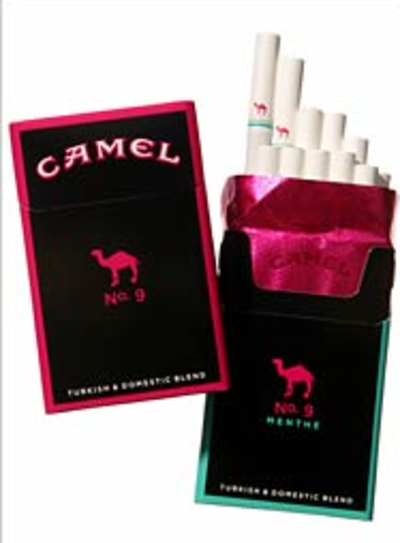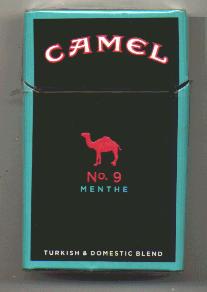Oh Viagra, is there nothing you can't solve? Often perceived to be the one stop solution to all of life's social and sexual problems, our nation, among many other industrialized countries, has perhaps grown too dependent on the drug. Whether it's to fix even the most dysfunctional, poisonous relationship, alleviate chest pain, or just to give a man a little extra boost in confidence, Viagra is a wunderkind of the medical field.
Viagra (or Sildenafil citrate) was conceived in the Pfizer labs as an experimental drug for high blood pressure and for a type of heart disease. When the unfortunate side effect of erection was discovered, Pfizer, instead of scrapping the drug, realized it had tapped into the previously uncharted terrain of the cure for erectile dysfunction (ED). Viagra was patented in 1996 and was approved by the FDA in 1998, an approval process that took a mere six months. The rest is history. Since then, it has been used by millions of men and has essentially become a household name and a cultural mainstay.
 Viagra, predictably enough, is marketed and advertised for men; specifically for white, heterosexual men. While the packaging for the product varies, some can be very sensual. Although not available in this country (as far as I know), this package, shown to the right of this paragraph, shows a woman in ecstasy. The picture is certainly alluring and sexy, although at the same time, not especially risqué or in particularly bad taste. Of note is that the woman is blue, as well as her pendent necklace, which subtley refrences Viagra: the Little Blue Pill. In this context, Viagra clearly wants to impart on the male consumer that they too can and should pleasure their partner in this way, and the best way of doing this is through Viagra.
Viagra, predictably enough, is marketed and advertised for men; specifically for white, heterosexual men. While the packaging for the product varies, some can be very sensual. Although not available in this country (as far as I know), this package, shown to the right of this paragraph, shows a woman in ecstasy. The picture is certainly alluring and sexy, although at the same time, not especially risqué or in particularly bad taste. Of note is that the woman is blue, as well as her pendent necklace, which subtley refrences Viagra: the Little Blue Pill. In this context, Viagra clearly wants to impart on the male consumer that they too can and should pleasure their partner in this way, and the best way of doing this is through Viagra. On the other hand, much of its other packaging and advertising are very unexciting and tepid. Bob Dole (Senate Minority/Majority Leader, 1996 presidential nominee), was in a series of Viagra commercials in the late 1990s, and most people would agree that he is not sexually appealing nor sexually provacative. Furthermore, most ads for Viagra are nonsexual in nature and mostly feature men exclusively. Country folks singing a take off of Elvis' "Viva Las Vegas" (in this case "Viva Viagra") do not elicit much excitement for the product (http://www.youtube.com/watch?v=umhEoIdKYm8). Nor is a commercial showing men prancing around jubilantly to Queen's "We are the Champions" very scantilizing or arousing (http://www.youtube.com/watch?v=Xk9JwV8sZTs&feature=related). It would appear that the advertisements' key message is to emphasize the incredible confidence and feelings of masculinity one gets from the product, which strengthens homosocial bonds.
On the other hand, much of its other packaging and advertising are very unexciting and tepid. Bob Dole (Senate Minority/Majority Leader, 1996 presidential nominee), was in a series of Viagra commercials in the late 1990s, and most people would agree that he is not sexually appealing nor sexually provacative. Furthermore, most ads for Viagra are nonsexual in nature and mostly feature men exclusively. Country folks singing a take off of Elvis' "Viva Las Vegas" (in this case "Viva Viagra") do not elicit much excitement for the product (http://www.youtube.com/watch?v=umhEoIdKYm8). Nor is a commercial showing men prancing around jubilantly to Queen's "We are the Champions" very scantilizing or arousing (http://www.youtube.com/watch?v=Xk9JwV8sZTs&feature=related). It would appear that the advertisements' key message is to emphasize the incredible confidence and feelings of masculinity one gets from the product, which strengthens homosocial bonds. It is also strange that there are no women in the advertisements, as if women are inconsequential and irrelevant partners in the sexual experience. Although, I can see the possibility that if they did feature females more prominently, they would only be there as sexual objects and not as human beings. So, perhaps it is better without them. The most sexually charged commercial I've seen is one for Cialis, in which an older couple are in separate bathtubs outside, enjoying a sunset. Which begs the question, why bathtubs and why can't they at least share one, albeit in a nonsexual way?
It is also strange that there are no women in the advertisements, as if women are inconsequential and irrelevant partners in the sexual experience. Although, I can see the possibility that if they did feature females more prominently, they would only be there as sexual objects and not as human beings. So, perhaps it is better without them. The most sexually charged commercial I've seen is one for Cialis, in which an older couple are in separate bathtubs outside, enjoying a sunset. Which begs the question, why bathtubs and why can't they at least share one, albeit in a nonsexual way?These advertisements in a way neuter Viagra and its very sexual purpose. Indeed, perhaps this is the reason why these adverts aren't more sexualized: it is because of the assumption that the product is sexualized enough in and of itself. I would agree with that. Nobody has any illusions about what this product is and what it does for the male anatomy. We know that it revitalizes relationships, helps with sexual dysfunction, and helps to boost men's egos. Therefore, oversexualized commercials are unnecessary. And America's tendency toward puritanism, as well the ever-present FCC, are reasons enough not to offend people's sensitivities. However, it isn't out of the question that Viagra, or one of its competitors, won't push the envelope to get more customers. After all, it is a bit strange that advertisements for Carl's Jr. are far more sexualized and racy than any ED product.
 I chose this topic because this widely-used product is incredibly influencial in a myriad of unforeseen areas. Did you know, for instance, that Viagra has played a significant role in the War on Terror? Apperantly, the little blue pill has been distributed to polygamous tribe leaders in Afghanistan in the hopes that they will provide U.S. forces with information. So, in effect, we are directly contributing to the horrendous oppression of Afghan women, perpetuating the legal rape of females by their husbands, and a ban on their education. Additionally, there is evidence that Viagra can possibly make men sterile. There are also a handful of cases where men went blind after using the drug, although its causality is unclear. Viagra and other ED drugs are also pursuing cures for female arousal disorder (i.e. achieving orgasm, increasing libido). Nine tablets of this drug are distributed every second of everyday worldwide. It is these little-known facts, among many others, that make this product intriguing and worthy of further study.
I chose this topic because this widely-used product is incredibly influencial in a myriad of unforeseen areas. Did you know, for instance, that Viagra has played a significant role in the War on Terror? Apperantly, the little blue pill has been distributed to polygamous tribe leaders in Afghanistan in the hopes that they will provide U.S. forces with information. So, in effect, we are directly contributing to the horrendous oppression of Afghan women, perpetuating the legal rape of females by their husbands, and a ban on their education. Additionally, there is evidence that Viagra can possibly make men sterile. There are also a handful of cases where men went blind after using the drug, although its causality is unclear. Viagra and other ED drugs are also pursuing cures for female arousal disorder (i.e. achieving orgasm, increasing libido). Nine tablets of this drug are distributed every second of everyday worldwide. It is these little-known facts, among many others, that make this product intriguing and worthy of further study.Sources












